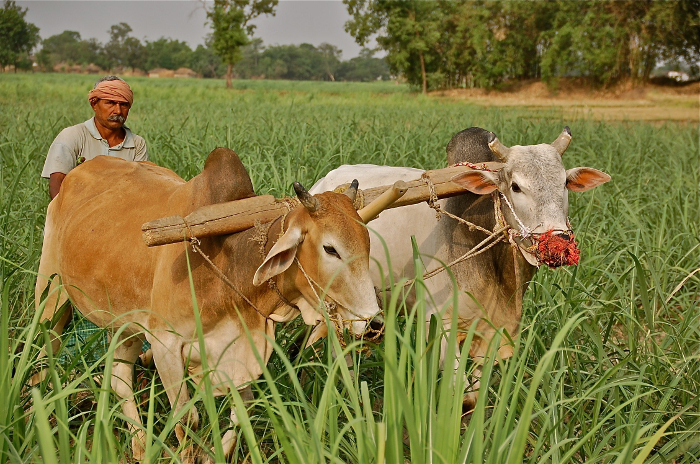
India’s agriculture has hardly grown after 2011. If we consider the gross value added in agriculture, annual growth rates over the previous year were 1.5 per cent in 2012-13, 4.2 per cent in 2013-14, -0.2 per cent in 2014-15 and 1.2 per cent in 2015-16. Growth rates in agriculture were to revive in 2016-17, but there is deep uncertainty due to the disruptive consequences of demonetisation. Thus, the government was expected to significantly raise public spending in agriculture not just for a revival of growth rates but also to achieve its own curious goal of doubling farmer’s incomes by 2022. That was the hope from India’s Union Budget 2017-18, presented in the Parliament today by the Finance Minister Arun Jaitley.
However, Budget 2017-18 is a contractionary budget. If the fiscal deficit is projected to fall from 3.5 per cent in 2016-17 to 3.2 per cent in 2017-18, the gross tax revenue is projected to remain stagnant at 11.3 per cent of the GDP in 2016-17 and 2017-18. In other words, expenditures would have to slow down. Thus, if total expenditure rose by 12.5 per cent between 2015-16 and 2016-17(RE), it would rise only by 6.6 per cent between 2016-17(RE) and 2017-18(BE).
Agriculture, too, has been delivered a fiscal blow in the budget. Take the following: revenue expenditures on agriculture and allied activities fell in absolute terms, by (-)2.7 per cent, in the last year i.e., between 2015-16 and 2016-17(RE). Between 2016-17(RE) and 2017-18(BE), the expenditure is to rise by just 4.8 per cent. In absolute and nominal terms, the revenue expenditure on agriculture and allied activities in 2015-16 was Rs 2.02 lakh crore; two years past, the budgeted amount for 2017-18 is Rs 2.06 lakh crore. In real terms, this may even constitute a decline. Just how such a conservative fiscal stance would help doubling farmer’s incomes is a mystery.
If we consider sub-sectors of agriculture like crop husbandry, revenue expenditures are to fall by 6.8 per cent between 2016-17(RE) and 2017-18(BE). That is, from Rs 39,406 crore to Rs 30,923 crore. For most other components within agriculture, except in irrigation and flood control, the rise in budgeted revenue expenditures is minimal. The budgeted rise in allocation for MGNREGS is just 1.1 per cent. While fertiliser prices are sharply rising, fertiliser subsidy stands still at Rs 70,000 crore in 2016-17(RE) and 2017-18(BE).
The Finance Minister may turn around and say that while revenue expenditures have fallen or stagnated, capital expenditures have risen. Budget documents show that capital expenditure in agriculture and allied activities is to rise from Rs 1465 crore in 2016-17(RE) to Rs Rs 3676 crore in 2017-18(BE). That is, a rise by Rs 2211 crore. However, what this argument would miss is that almost all of this budgeted rise in capital expenditure in agriculture is focused on one sub-sector: “Investments in Agricultural Financial Institutions”. Here, the capital expenditure is to rise from Rs 1405 crore in 2016-17(RE) to Rs 3568 crore in 2017-18(BE). That is, a rise by Rs 2163 crore. Going by the budget speech, most of this expenditure would go into supporting the National Bank for Agriculture and Rural Development (NABARD) for the computerisation and integration of 63,000 functional primary agricultural credit societies (PACS) with the core banking system of District Central Cooperative Banks (DCCB). Thus, there almost no rise in capital expenditures in agriculture.
In sum, Budget 2017-18 is deeply disappointing for the Indian farmers. In these hard times of cash crunch, the government has provided them with no relief.
About the author
R Ramakumar is a Professor at the Tata Institute of Social Sciences, Mumbai.












































































